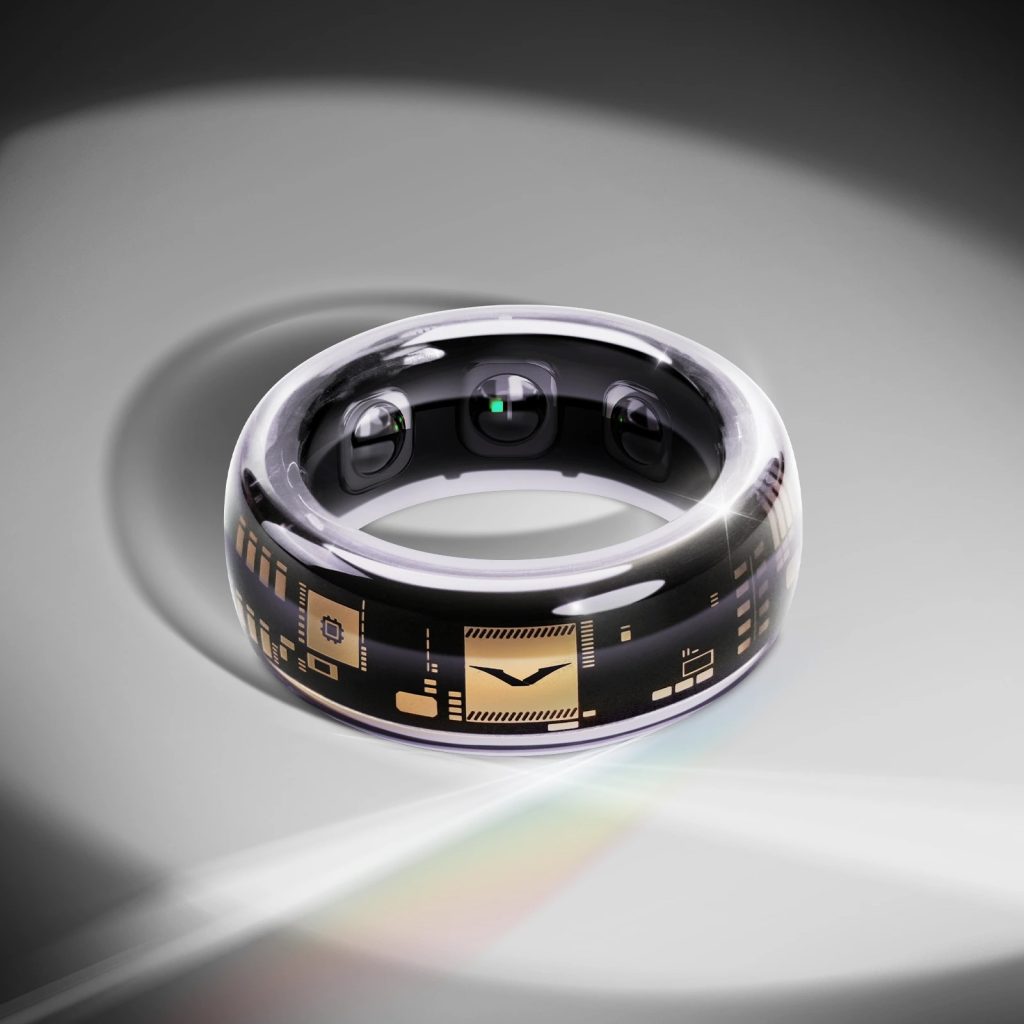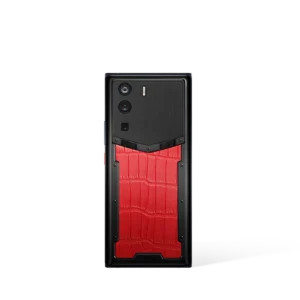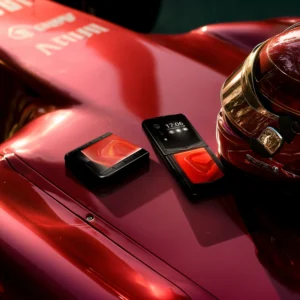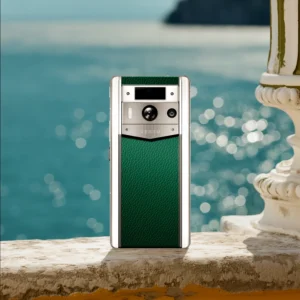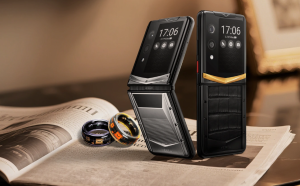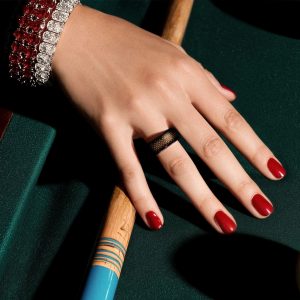Struggling with bulky, uncomfortable wearables that track your health? Discover how sleek, lightweight smart rings are revolutionizing personal wellness monitoring in 2025.
What You'll Learn:
- The core functionality and advantages of lightweight smart rings.
- Essential steps and considerations for starting your smart ring journey.
- Proven strategies and expert advice for maximizing your ring's benefits.
- Cutting-edge techniques for advanced health tracking and insights.
Part 2: Main Body
What is Lightweight Smart Ring?
Understanding Lightweight Smart Ring
In the ever-evolving landscape of wearable technology, lightweight smart rings are emerging as a discreet yet powerful tool for comprehensive health monitoring. Unlike their bulkier smartwatch counterparts, these rings are designed for minimalist comfort and seamless integration into daily life. They typically house advanced sensors that capture a wealth of physiological data, including heart rate, sleep patterns, body temperature, activity levels, and even blood oxygen saturation (SpO2). The emphasis is on unobtrusive, continuous tracking without the visual or physical distraction of a traditional watch.
Key Benefits and Features
The appeal of lightweight smart rings lies in their unique blend of aesthetics and functionality. Here are some of their most compelling benefits and features:
- Discreet Design: Their primary advantage is their subtle, jewelry-like appearance, making them suitable for any occasion and comfortable for 24/7 wear, including sleep.
- Comprehensive Health Metrics: Despite their size, they offer in-depth tracking of vital signs, providing users with actionable insights into their overall well-being.
- Long Battery Life: Many models boast extended battery performance, often lasting several days on a single charge, reducing the hassle of frequent charging.
- Advanced Sleep Tracking: They are particularly adept at monitoring sleep stages (light, deep, REM) and quality, offering personalized recommendations for improved rest.
- Activity and Recovery Monitoring: Rings track daily steps, calories burned, and provide insights into readiness scores, indicating how well your body has recovered.
- Stress Management Tools: Some rings can measure heart rate variability (HRV) and guide users through mindfulness exercises to manage stress.
- Temperature Sensing: Continuous skin temperature monitoring can help detect subtle changes, potentially indicating illness or hormonal shifts.
Here's a comparison of popular lightweight smart ring features:
| Feature | Oura Ring Gen3 | Ring One | Ultrahuman Ring Air |
| Sleep Tracking | Excellent | Very Good | Excellent |
| Activity Tracking | Good | Good | Very Good |
| Heart Rate | Continuous | Continuous | Continuous |
| SpO2 | Yes | Yes | Yes |
| Body Temperature | Yes | Yes | Yes |
| Readiness Score | Yes | Yes | Yes |
| Battery Life (Days) | 5-7 | 4-6 | 4-6 |
| Water Resistance | Up to 100m | Up to 50m | Up to 50m |
| Material | Titanium | Titanium | Titanium |
| App Subscription | Optional (Full features) | Included | Included |
How to Get Started with Lightweight Smart Ring
Prerequisites and Requirements
Before diving into the world of smart rings, ensure you have the following:
- A Compatible Smartphone: Most smart rings require a smartphone (iOS or Android) to sync data and access the companion app. Check the manufacturer's specifications for compatibility.
- Bluetooth Connectivity: Your smartphone needs to have Bluetooth enabled for seamless data transfer.
- Internet Access: For initial setup, app updates, and data syncing, a stable internet connection is necessary.
- A Willingness to Engage: The true power of a smart ring comes from actively reviewing your data and implementing the insights provided.
Step-by-Step Setup Process
Getting your lightweight smart ring up and running is generally a straightforward process:
- Unboxing and Initial Charge: Carefully unbox your ring and its charging dock. Place the ring on the charger and allow it to reach a sufficient charge level as per the manufacturer's instructions.
- Download the Companion App: Search for the official app associated with your smart ring brand (e.g., Oura, Ring One, Ultrahuman) in your smartphone's app store and download it.
- Create an Account: Open the app and follow the prompts to create a new user account. This usually involves providing an email address and setting a password.
- Pair Your Ring: Turn on Bluetooth on your smartphone. In the app, select the option to pair a new device. The app should detect your ring, and you'll likely need to confirm the pairing on both devices.
- Complete Onboarding: The app will guide you through a brief onboarding process, asking for basic information like your age, gender, weight, and height. This helps the algorithms provide more personalized insights.
- Wear Your Ring: For accurate tracking, ensure the ring is worn on the correct finger (usually the index or middle finger, as recommended by the manufacturer) and fits snugly but comfortably.
“The key to unlocking the potential of your smart ring is consistent wear. The more data it collects, the more accurate and insightful your health trends will become.”
Best Practices for Lightweight Smart Ring
Industry Standards
Adhering to industry best practices ensures you get the most accurate data and a positive user experience.
- Consistent Wear: Wear your ring 24/7, except when charging, to capture continuous data. This is crucial for accurate sleep and activity tracking.
- Correct Finger Placement: Most rings are designed to be worn on a specific finger (often the index or middle finger) for optimal sensor contact. Always refer to your ring's manual.
- Regular App Syncing: Sync your ring with the companion app daily to ensure your data is up-to-date and backed up.
- Keep Firmware Updated: Manufacturers regularly release firmware updates to improve accuracy, add features, and fix bugs. Enable automatic updates or check for them manually.
- Clean Your Ring: Periodically clean your ring and the charging contacts with a soft, dry cloth to maintain optimal sensor performance.
Expert Recommendations
Health and tech experts offer valuable advice for maximizing your smart ring's benefits:
- Focus on Trends, Not Daily Fluctuations: Your health is a journey. Look for patterns over weeks and months rather than obsessing over minor daily variations.
- Integrate Insights into Lifestyle Changes: Use the data from your ring to inform decisions about your sleep schedule, exercise routine, and stress management techniques. For example, if your readiness score is low, consider a lighter workout or prioritizing rest.
- Understand Your Sleep Stages: Pay close attention to your sleep data. Improving sleep hygiene – like maintaining a consistent bedtime and creating a dark, quiet environment – can significantly impact your overall well-being.
- Monitor Your HRV for Stress: Heart Rate Variability (HRV) is a key indicator of your body's stress levels and recovery. High HRV generally indicates a well-recovered state, while low HRV can signal stress or fatigue.
- Use Activity Data for Balance: Track your activity to ensure you're moving enough, but also to know when to prioritize recovery. Overtraining without adequate rest can be detrimental.
Advanced Lightweight Smart Ring Techniques
Professional Tips
For users looking to go beyond basic tracking, these advanced techniques can unlock deeper insights:
- Correlate Ring Data with External Factors: Manually log events like meals, caffeine intake, alcohol consumption, or significant stressors in a journal or a separate health app. Then, compare these with your ring's data (e.g., sleep quality, HRV) to identify specific triggers and their impact.
- Utilize Temperature Trends for Menstrual Cycle Tracking: For women, the continuous monitoring of body temperature can offer valuable insights into ovulation and the menstrual cycle, potentially aiding in fertility tracking or understanding hormonal fluctuations.
- Analyze HRV Trends for Performance Optimization: Athletes and fitness enthusiasts can use HRV as a biofeedback tool. By observing how your HRV responds to training intensity, sleep, and stress, you can fine-tune your training load for optimal performance and reduced risk of overtraining.
- Experiment with Different Fingers: While manufacturers recommend specific fingers, some users find that wearing the ring on a different finger (if it still fits snugly and sensors make contact) can yield slightly different but still valuable data. This is more experimental.
Advanced Strategies
Leverage your smart ring data for more strategic health and wellness management:
- Proactive Illness Detection: Pay attention to sustained dips in your resting heart rate, elevated resting heart rate, or significant drops in body temperature or HRV. These anomalies, when appearing together, can sometimes be early indicators of an impending illness, allowing you to take preventative measures like resting more.
- Personalized Sleep Optimization: Instead of just looking at your sleep score, analyze the duration of each sleep stage. If you consistently have low deep sleep, try adjusting your evening routine – perhaps reducing screen time or avoiding heavy meals before bed.
- Stress Resilience Building: Use your readiness and HRV scores to guide your day. On days with low readiness or HRV, focus on low-impact activities and stress-reduction techniques like meditation or deep breathing exercises. On high-readiness days, you can push your training harder.
- Long-Term Health Trend Analysis: Many apps allow you to export your data. Analyzing this data over months or years can reveal subtle but significant long-term health trends that might otherwise go unnoticed.
“The most powerful use of a smart ring is to become a proactive participant in your own health. It's not just about collecting data; it's about understanding what that data means for you.”
FAQ (Frequently Asked Questions)
Q: Are lightweight smart rings accurate for health tracking?
A: Yes, most reputable lightweight smart rings utilize advanced sensors and algorithms that are generally considered accurate for tracking key metrics like heart rate, sleep stages, and body temperature. While they may not replace medical-grade devices for diagnosis, they provide valuable trends and insights for personal health monitoring.
Q: Which finger should I wear my smart ring on?
A: Manufacturers typically recommend wearing the ring on your index or middle finger for optimal sensor contact and accuracy. Always refer to the specific instructions provided with your ring, as fit and sensor placement can vary.
Q: Do I need a subscription to use a lightweight smart ring?
A: Some smart rings offer a basic functionality with the initial purchase, while others have optional or mandatory subscription tiers for full access to advanced analytics, personalized insights, and historical data. Check the specific product details before purchasing.

